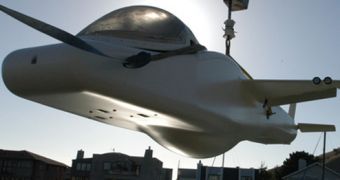Without the world knowing, Steve Fossett had begun working on a submersible project (a marine deep-diving device) that would also be able to fly, even as high as to the stars. However, before reaching the outer space, it would have allowed scientists (and himself too) to dive in the depths of the Mariana Trench (about 36,000 feet or 11 km deep).
For those of you who don't know, Steve Fossett was an American businessman, aviator, sailor and adventurer, as well as the first person to fly alone around the globe in a balloon, without stopping. He built his wealth on financial industry and he circumnavigated the Earth 5 times, in a balloon, as a sailor and as an airplane pilot. A close collaborator to the Royal Geographical Society and member of the Explorers Club, he set 116 records in 5 sports, out of which 60 still stand, since June 2007.
His unfortunate disappearance on September 3, 2007 lead to the halting of his project, but Graham Hawkes, an inventor from San Anselmo, continued to detail the craft's design. Given its intended goals, it's easy to reckon why the “part spacecraft, part airplane and part submarine” device, as Hawkes labels it, was named “Deep Space Challenger.”
The DSC is built of carbon fiber, making it able to withstand pressures of 20,000 pounds per square inch – 14,062 tons/square meter (15,000 times higher than the regular atmospheric one) – instead of titanium, like most regular submersibles. “The best and strongest materials such as titanium will only get you about halfway down to the ocean floor. We used carbon fiber that's laid down filament by filament under computer control, the same as what's used on rocket motor nozzles,” explained Hawkes.
Still, as the remains of the late billionaire were recently found amidst those of his plane, the fate of the “Deep Space Challenger” is uncertain. For now, the design of the craft is part of the Fossett estate.

 14 DAY TRIAL //
14 DAY TRIAL //